Digital Measurement Priorities
by Tim Jones, Chair of IAB Europe Research Committee
The opportunities to measure the success of advertising have grown considerably since the arrival and continued evolution of digital channels. Digital has introduced a complex range of metrics in which to evaluate brand affinity and campaign performance expanding them far beyond traditional media metrics of opportunity to see and sales uplift.
With all the choice available understanding the key performance indicators is essential to build strategies to achieve these goals. But what are the KPIs the industry wishes to measure success against and how do you develop strategies for them?
To answer this question, IAB Europe has recently surveyed the key industry stakeholders across Europe in the second “Priorities for Digital Measurement” survey. A project across 29 European markets gaining the opinions of Advertisers, Agencies and Publishers on their key digital measurement priorities.
For the industry as a whole the top measurement priority is the ability to perform cross media evaluations (89%) and to understand more how online works in combination with other media (85%). Both of these have risen considerably since the previous study in 2014.
Looking in more detail at these requirements we see that specifically how TV and online work together is a key requirement (96%) and perhaps not surprisingly as digital advertising spend is now €7bn higher than TV (IAB Europe AdEx Benchmark 2017).
Much work has been done on the combined effect of TV and Digital in terms of both joint reach and frequency and even in isolating sales effect across media. A few research companies are now able measure campaigns in this way in some markets.
I conducted a study on this subject called “Cross Screen Planner” fusing together the TV and digital industry data in Belgium to create a planning optimisation tool able to isolate channels and dayparts as well as key demographics. It also included planning costs. The conclusion then was that to achieve optimum cost effective GRP’s, 80% of GRP’s should be on TV and 20% on Digital, except for larger campaigns of over 500 GRP’s where the split changed to 75% TV and 25% digital. It should be noted that at the time TV was a very dominant force in Belgium taking 88% share of ad spend.
The priorities for measuring digital campaign successes are led by evaluating brand awareness which was stated by 100% of advertisers and 93% of agencies. If recall of advertised brands is the key priority how can we ensure we optimise campaigns to this? Here are some key considerations:
- Viewability is obvious but if a served ad is not seen it cannot be remembered
- Video completion rates – the longer an ad is seen the more it is remembered
- Frequency – recall rates go up by frequency generally peaking around 8 to 10
- Branding – how strong is the branding and when is it shown. If the brand is shown/ mentioned in the last 2 seconds of a 20 sec video then only 100% completion rates will provide strong brand awareness
- How strong is the creative – stronger more engaging creative provides higher completion rates = higher awareness
The second highest priority for campaign success is uplifts in site visits with 96% of advertisers interested in this metric, this is above purchase intent and may reflect the changing significance of site visits in driving online sales for advertisers. NB: site visits does not mean Click through rates.

Studies I have run on online actions such as brand search and direct site visits have shown average branded search and URL visits for exposed audiences of between 3% and 6% (excluding CTR) and therefore considerably more online actions take place than measured through click through rates alone which average .05-1%
Click through rates have been a measure of campaign performance since the dawn of digital advertising and remain important for advertisers with 93% saying so but agencies give less importance to CTR as a measure (72%). In fact for advertisers CTR is jointly the 3rd most important measure behind brand awareness and site visits. The difference of opinion between advertisers and agencies is the most significant across all metrics and indicates the need for greater alignment of this metric as a measure of success.
Personally I think with all the metrics available a click through rate is not the most valuable, it is seen as such an important measure but we are basing the success of €42bn digital advertising investment (IAB Europe AdEx Benchmark 2016) spend on the actions of .05% of the audience.
So what have we learnt in optimising against these KPIs?
Data and analytics can help provide some of the answers and analysis I have conducted concludes that different digital strategies are needed for the different KPIs and importantly one size does not fit all.
For example if video completion rates are important and particularly if branding is at the end of the video then shorter formats are key with under 15seconds being 2.5 times more effective than 60 seconds at gaining 100% completion rates.
If click through rates are the KPI then the opposite is true with 60 second videos driving a 50% higher CTR than 15 seconds.

In fact different strategies are evident across video lengths, player sizes and platforms – the detail of which is beyond the scope of this article but can be summed up in a simple diagram, one strategy does not fit all KPIs.
The IAB Europe Digital Measurement Priorities report is available for download here and provides highly valuable insight into the metrics for digital advertising success across the industry. It gives consideration of how your metrics of success compare industry wide. But remember to consider different strategies for each KPI you select as they are likely to be different.










